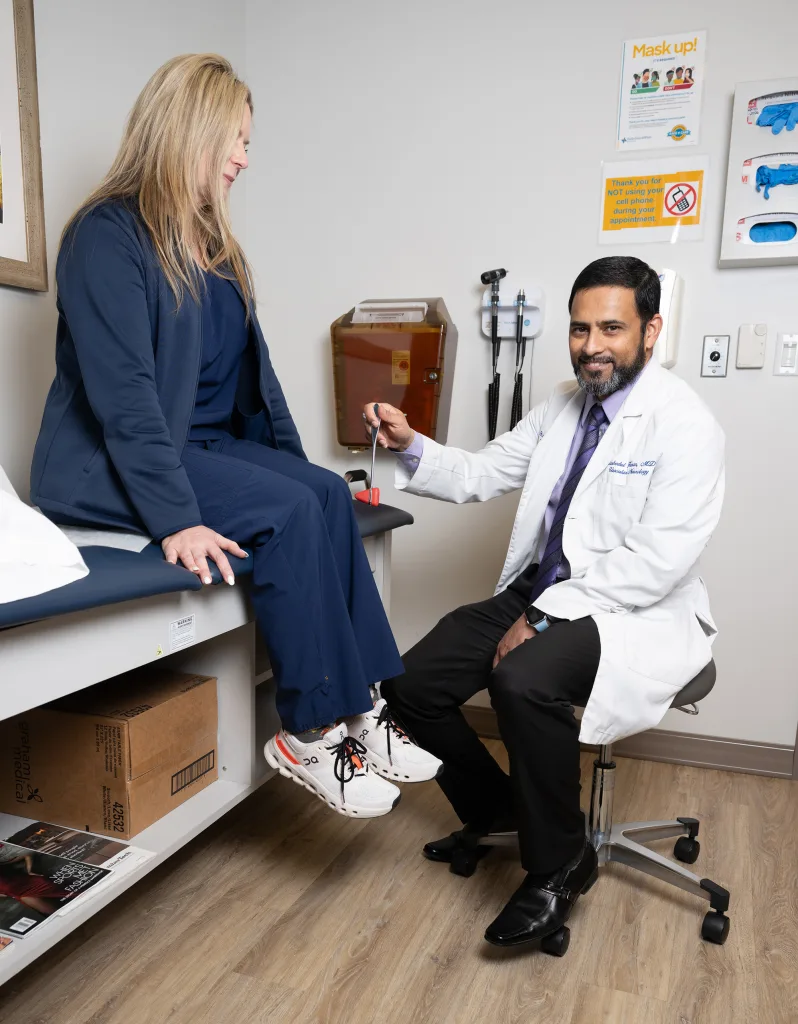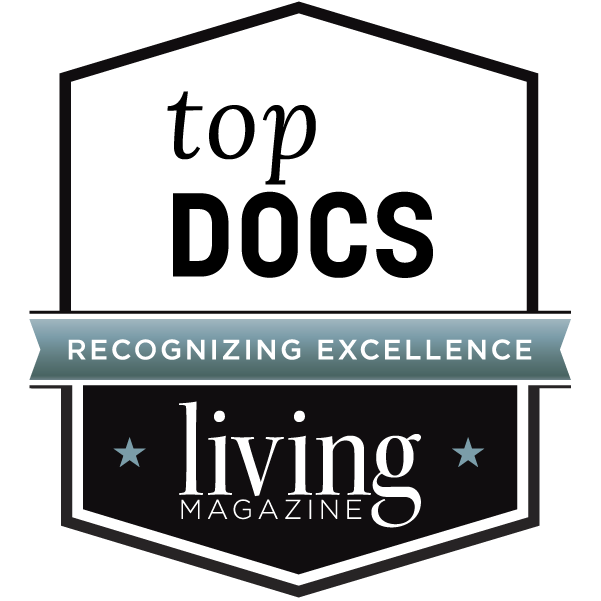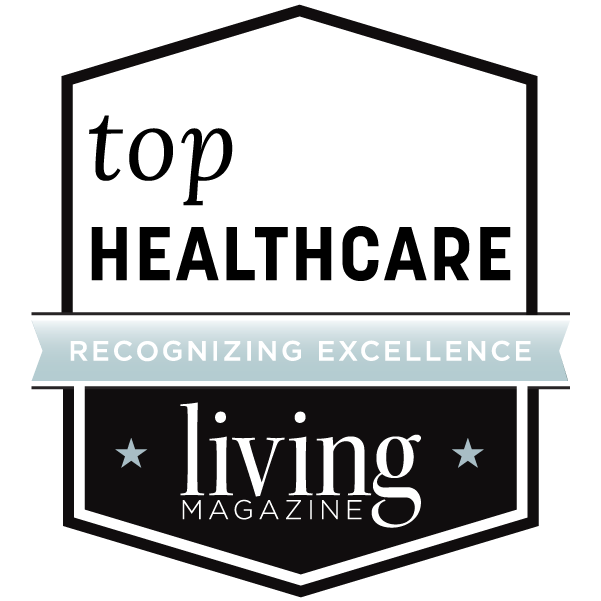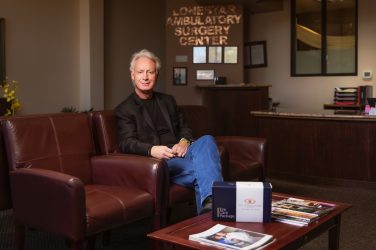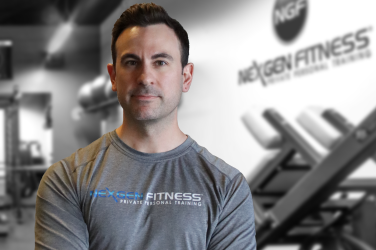
By Steve Gamel Photos by 1035 Images
Most people associate strokes with older adults. After all, the risks of experiencing this and other serious medical events increase the older we get. Additionally, underlying health conditions and other risk factors, such as high blood pressure, high cholesterol, smoking, diabetes, and even genetics, are more prevalent over time and further elevate the likelihood of a stroke.
That said, strokes can and do happen to younger people. As the medical director of the Comprehensive Stroke Program at Baylor Scott & White — Plano, Dr. Rashedul Hasan witnesses this reality every day. He’s seen and heard of patients in their 30s — sometimes as young as early to mid 20s — displaying telltale symptoms ranging from slurred speech, blurred vision, and dizziness to difficulty walking, fatigue, and sudden paralysis on one side of the body. According to many statistics, the prevalence of strokes among young people has grown by as much as 30% in recent years, making early diagnosis, intervention, and support that much more critical.
“It is not an old-age thing — that notion has to change,” Dr. Hasan said. “If you or a loved one have not experienced a stroke, it’s important to understand your risk factors and start making lifestyle changes. After all, prevention is always better than the cure. If you think you are having a stroke, call 911 immediately. The sooner you get treatment, the better the outcome.
“Our goal is to raise awareness of the rising incidence of strokes among younger adults and the unique challenges they face.”
Stroke Awareness Matters
Stroke is a medical emergency that occurs when a blood vessel in the brain becomes blocked (ischemic stroke) or breaks (hemorrhagic stroke). When that happens, part of the brain cannot get the blood and oxygen it needs, so it and the brain cells die. During a stroke, nearly two million brain cells die every minute, and this can lead to sudden dizziness or loss of balance, sudden loss or change in vision in one or both eyes, facial drooping or an uneven smile, arm numbness or weakness, slurred speech, or difficulty speaking.
According to the CDC, more than 795,000 people in the United States have a stroke every year.
About 610,000 of these are first or new strokes. About 185,000 strokes — nearly 1 in 4 — are in people who have had a previous stroke.
Strokes can — and do — occur at any age. Dr. Hasan said this alarming trend is easy to understand when you consider the significant changes in lifestyle habits for people of all ages. They are leading more sedentary lives and eating junk food and processed foods more than ever before. “The longer these lifestyles remain in place, the higher the risk for a stroke,” Dr. Hasan said.
Stroke Symptoms Require Immediate Care
In many cases, a medication to eliminate blockages and restore blood flow can be given to patients experiencing symptoms of a stroke. Still, it must be administered shortly after symptoms begin. Dr. Hasan said the problem in young patients is that they and many medical professionals don’t immediately recognize the presence of a stroke — simply because of the rarity in young people. This can lead to a delayed or misdiagnosis.
“Many times, doctors may assume it’s a migraine or drug intoxication — the expectation is that they can’t possibly be having a stroke and that it must be something else. But, in fact, they are,” Dr. Hasan said. “If a young person experiences a stroke, their recovery is usually quicker than older adults. That said, younger stroke patients experience far more mental health issues such as post-stroke depression and anxiety or fear of potentially having another stroke in the future. They require more comprehensive care to address these issues.”
Baylor Scott & White Health offers advanced stroke care through its emergency departments and stroke centers across North and Central Texas. Baylor Scott & White — Plano is certified as a Comprehensive Stroke Center and has a dedicated ICU bed for stroke patients, reflecting the highest level of competence in treating stroke and stroke complications. The prestigious certification is based on standards from the American Stroke Association.
They have the advanced technologies, specialized physicians on staff, and a highly trained support team vital to quickly diagnosing and treating strokes. Additionally, they serve as a resource for other local medical facilities, offering guidance and consultation for patient triage and the availability of diagnostic tests or treatments.
“We take a multidisciplinary approach with vascular trained neurologists, surgeons, cardiologists, and other professionals working together to provide the best patient care possible,” Dr. Hasan said. “Once patients are discharged, they are seen in follow-up visits at our dedicated stroke clinic. We also have stroke support groups every third Tuesday of the month.
“I get to see how our team works from every level, and everyone is cooperative, prepared, and focused on providing the best patient care possible.”
Reduce Your Stroke Risk
Young people must remain active and improve their nutrition and diet to manage or prevent chronic conditions like high blood pressure, and high cholesterol that can lead to stroke complications. If someone has already had a stroke before and is worried about having another, it is equally important to evaluate existing risk factors and make changes to lead a healthier lifestyle.
“You must know your risk factors because they are different for everyone,” Dr. Hasan said. “Once you have identified yours, take the steps now to manage or prevent them. We want people to lead happy, healthy lives and recover quickly.”
CONTACT
4700 Alliance Boulevard, Plano, Texas 75093
(469) 814-2000 | BSWHealth.com/locations/plano-hospital
Knowing the signs of a stroke is one of the keys to successful recovery.
The acronym is BE FAST:
B—Balance — Sudden dizziness or loss of balance
E—Eyes — Sudden loss or changes in vision in one or both eyes
F—Face — Facial droop, uneven smile
A—Arm — Arm numbness or weakness
S—Speech — Slurred speech, difficulty speaking or understanding
T—Time — Time to get help immediately
